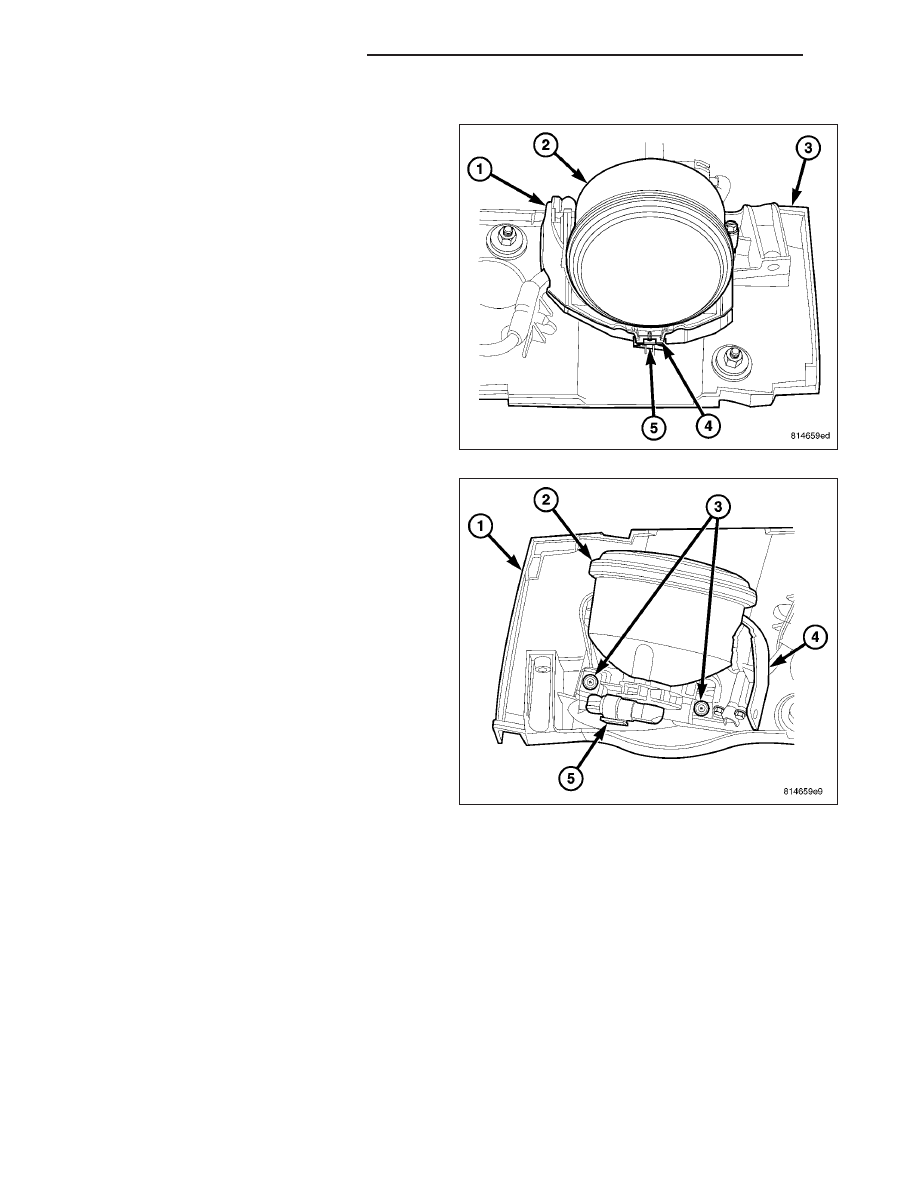Jeep Liberty KJ. Manual - part 108

LAMP
1. Position the lamp (2) and bracket (1) unit onto the
light bar reinforcement (3).
NOTE: There is a hook on the forward edge of the
lamp bracket that must be secured under a tab
that is integral to the reinforcement. The rear of
the lamp must be lifted upward by the lamp sock-
et/connector in order to engage the hook under
the tab.
2. Lift the lamp socket/connector on the rear of the
lamp upward far enough to engage the hook (4) on
the front edge of the lamp bracket under the inte-
gral tab (5) of the reinforcement.
3. Slide the lamp and bracket forward and seat.
4. Install and tighten the two screws (3) that secure
the rear of the lamp bracket (4) to the reinforce-
ment (1). Tighten the screws to 2 N·m (17 in. lbs.).
5. Reconnect the light bar wire harness connector (5)
to the socket on the back of the lamp (2).
6. Reconnect the battery negative cable.
7. Confirm proper lamp alignment. (Refer to 8 -
ELECTRICAL/LAMPS/LIGHTING
-
EXTERIOR/
LIGHT BAR LAMP - ADJUSTMENTS).
8. Reinstall the cover over the light bar lamps and
reinforcement. (Refer to 8 - ELECTRICAL/LAMPS/
LIGHTING
-
EXTERIOR/LIGHT
BAR
LAMP
COVER - INSTALLATION).
8L - 90
LAMPS/LIGHTING - EXTERIOR
KJ